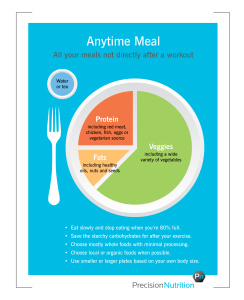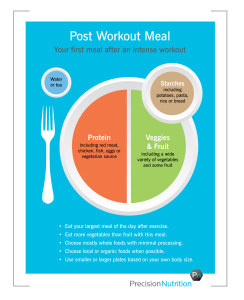By Flow Trainer, Mackennon Klink, B.S., CSCS, CES, PN1
Losing weight is a fairly straight forward process: it comes down to calories in vs calories out. You eat less, workout more, and soon enough, you’ll have that dream body, right? Well….there’s a little more involved. Let’s examine calorie counting, one of the most popular ways to measure calorie consumption. The idea being that you count every calorie you take in, aiming to be in a deficit against the calories you expend. While it can work, it’s not the best long-term solution to the problem.
Why, you might ask? Let me tell you….
Calorie counting can quickly become tedious, inaccurate, and impractical, – especially if you are a busy professional. Any conscious dietary change to achieve a physique goal will create some level of stress and difficult choices. Anyone who’s gone through the calorie counting process has eventually asked themselves: did meal out fit within the allowed calories and how do I accurately track it? How many pumps of Pumkpin Spice can I have? After a while, these questions can drive any person insane.
In addition, you might achieve your short-term physique goal, but the honest truth is that calorie counting is not a long term solution to maintain your dream body. I know from experience. In the Spring of 2017, I adhered to a strict diet plan, and lost over 20 pounds in fat while building muscle in six short weeks. While those six weeks were challenging (yet ultimately rewarding) the true challenge came to me right after: how do I keep the weight off?
Enter The Precision Nutrition Hand Guide. I credit this guide to helping me control my portion sizes, maintain my current physique post diet and, more importantly, not going crazy or second guessing myself with every meal decision.
The goal of the hand size portion guide is to help you reach your nutrition and fitness goals without the tedious and somewhat difficult process of calorie counting. This is a super simple and easy method to help keep calories in control and to learn portion sizes. The best part is all you need is your hand.
The hand size methods works for a few reasons:
- Hands are portable. Unlike food scales, your hands will always be with you.
- Hands are scaled to the individual. Generally speaking, bigger people need more food and tend to have bigger hands, therefore getting larger portions. Smaller people need less food, tend to have smaller hands and therefore receive smaller portions.
- By using your hand as a guide, it will provide reasonable amounts of nutrient dense food while still providing the necessary macronutrients (protein, carbohydrates, and fats) and calorie needs. Nutrient dense foods will be your key attribute to any successful diet program, regardless if it’s fat loss or gain muscle.
In short, this guide will help you create a nutritional foundation or baseline without making it overly complicated. Most people will start getting positive results by simply sticking to these simple recommendations. As you progress, you can make adjustments to speed your process or overcome a plateau.
In the beginning, it may be a bit difficult to assess portion sizes, but practice makes perfect. After a few meals, this method will become familiar and in no time this will be a breeze. Take it one meal and one day at a time.
Total Daily Intake
|
Men |
Women |
|
|
Protein |
6-8 palms |
4-6 palms |
|
Vegetables |
6-8 fists |
4-6 fists |
|
Carb (optional) |
6-8 cupped handfuls |
4-6 cupped handfuls |
|
Fat |
6-8 thumbs |
4-6 thumbs |
Here’s another way to view your nutrition intake for each meal (assuming 3 meals each day).
|
Men |
Women |
|
|
Protein |
1-2 palms |
1 palm |
|
Vegetables |
1-2 fists |
1 fist |
|
Carbs (optional) |
1-2 cupped handfuls |
1 cupped handful |
|
Fats |
1-2 thumbs |
1 thumb |
This is your starting point. This will allow you to get in the adequate food and calories to meet your goals. Again, don’t worry about counting calories; you’re focusing on developing healthy eating habits. You have to build the foundation before you build the house.
You may be wondering what does that look like? Well, because I like you, here’s a visual guide to the hand portion control. Pretty simple right?

Wondering what that would look in a real world application? No problem. I got you covered. Here is another visual rep to help see what a (breakfast, lunch, dinner) plate should consist of:

This next plate illustrates what a “post-workout” looks like. Eat a post workout meal within one hour of your weight training or intense exercise session. This plate differs from the previous plate by taking advantage of the body’s metabolic response to exercise. After exercise, your body needs both carbs and protein to help rebuild your muscles and restore overall energy levels.

Depending on your fitness goals, you’ll modify your post workout meal.
- Looking to gain lean mass or improve your recovery from your workouts? Increase the carbs in your post-workout meal
- Looking to lose body fat fast? Keep starchy carbs low and post-workout.
Do you enjoy the calorie counting process and getting good results? Great! Continue doing what working for you! If not, then you may want to switch to the hand portion guide. Calorie counting, while effective, isn’t a reliable long-term option for sustaining fat loss. Calorie counting is an excellent tool to gain awareness and notice treads within your diet.
The key to any successful plan will be consistency.
The best plans are rarely the best designed, most complex, or most scientifically in depth. The best plans are practical and can be done consistently. Regardless of what diet or exercise plan you’re doing, the key will consistency.
